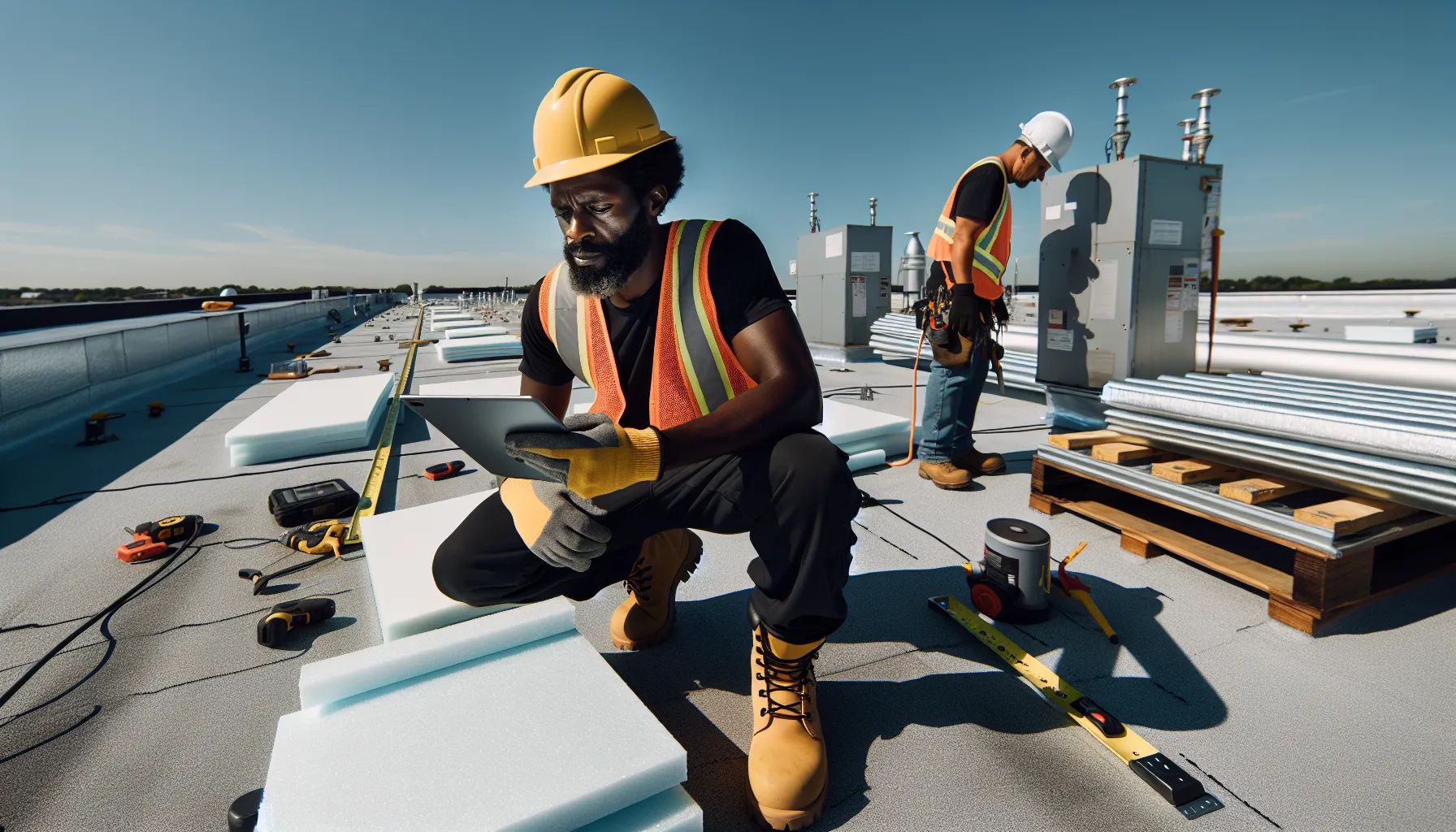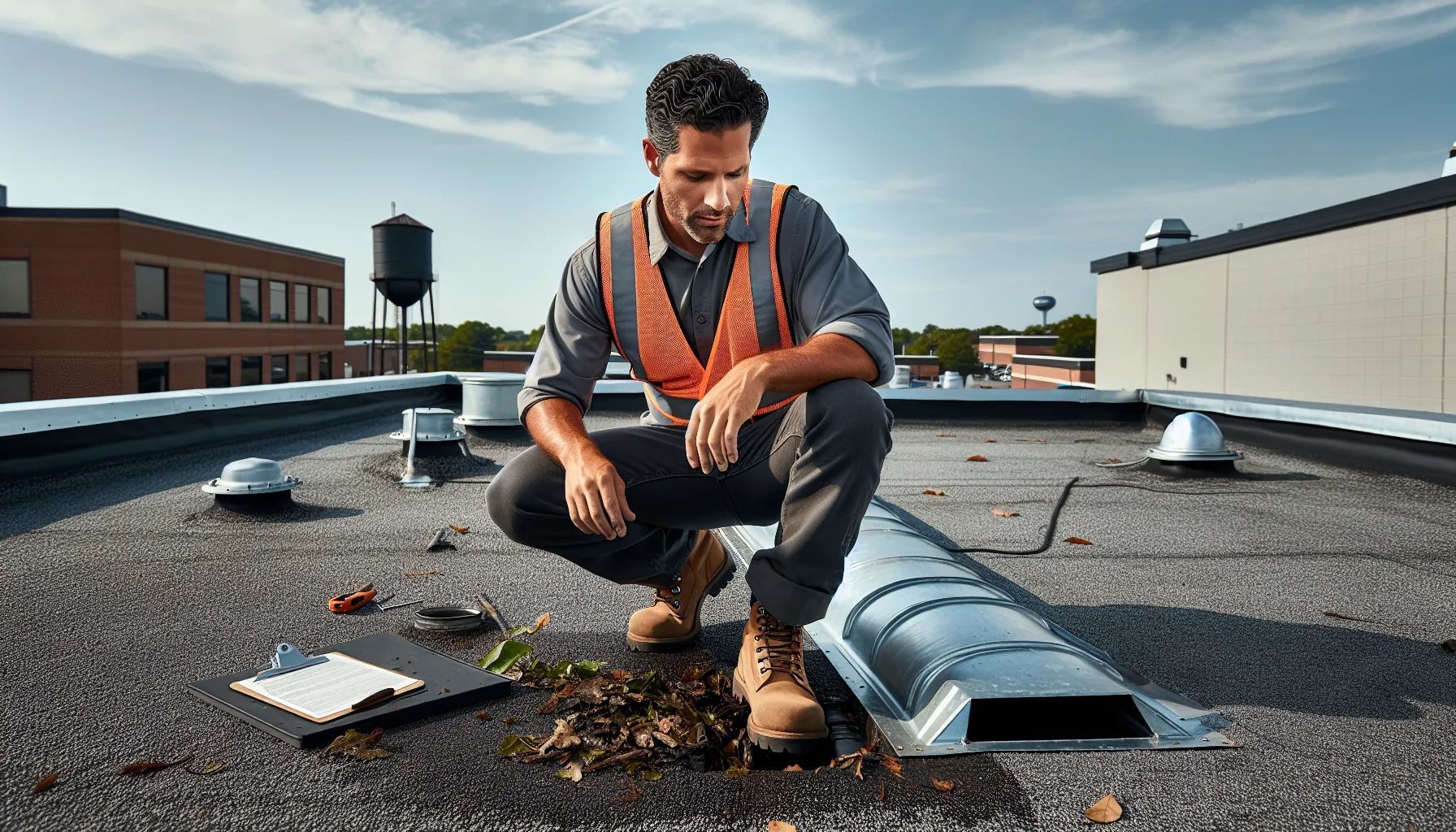Emergency Roofer: 24/7 Expert Guide to Fast Roof Repairs & Savings
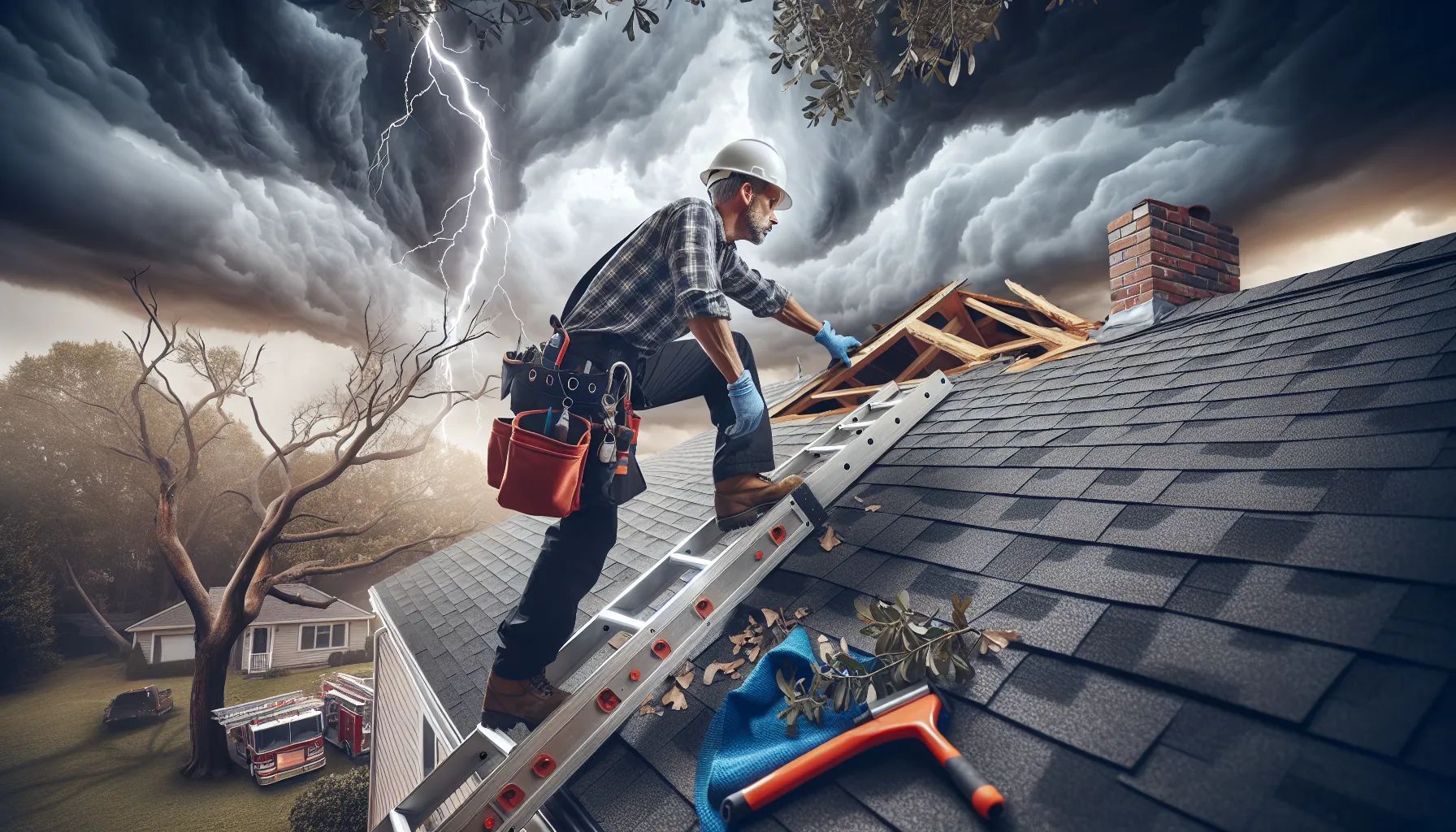
When disaster strikes your roof you need an emergency roofer fast. Whether it's storm damage fallen trees or sudden leaks waiting isn't an option. We've seen firsthand how quickly minor roof problems can escalate into major structural damage and costly repairs.
Finding a reliable emergency roofing service when you're in crisis mode can feel overwhelming. That's why we've put together this comprehensive guide to help you navigate the process. We'll share what qualifies as a true roofing emergency how to spot legitimate contractors and the critical questions to ask before letting anyone climb onto your roof.
Most importantly we'll reveal the insider tips that can save you thousands of dollars and protect your home from further damage. Let's jump into everything you need to know about emergency roof repairs.
What Defines an Emergency Roofer?
Emergency roofers specialize in rapid-response repairs for severe roof damage that threatens property safety. These professionals combine specialized skills, equipment availability, and round-the-clock service to address critical roofing situations.
Immediate Response Times
Emergency roofers respond within 2-4 hours of initial contact for critical situations. Storm damage, active leaks, and structural failures receive priority attention. Response times vary based on weather conditions and service demand during peak seasons.
Professional emergency roofing teams maintain dispatch systems that route calls to available crews. Digital tracking systems allow dispatchers to assign the nearest technician to each emergency location. Most companies guarantee arrival within specific timeframes - typically 4 hours for severe damage and 24 hours for moderate issues.
Weather events create surge demands that affect response times. Hurricane seasons see response delays extending to 6-12 hours in affected regions. Emergency roofers maintain larger crews during storm seasons to manage increased call volumes.
Property owners receive estimated arrival times during the initial call. Text message updates inform customers about technician locations and revised arrival times. This communication system reduces uncertainty during stressful emergency situations.
24/7 Availability and Service Areas
Emergency roofing services operate 365 days per year, including holidays and weekends. Call centers staffed with roofing specialists answer phones throughout the night. Technical crews remain on-call for immediate deployment to emergency sites.
Service areas typically cover 50-mile radius zones from company headquarters. Urban emergency roofers often service entire metropolitan areas, while rural companies cover multiple counties. Geographic coverage depends on crew size and vehicle fleet capacity.
Emergency roofers maintain partnerships with neighboring companies for overflow situations. These networks ensure coverage during extreme weather events when single companies reach capacity. Shared dispatch systems coordinate multi-company responses to widespread storm damage.
Holiday and weekend rates apply to emergency calls outside standard business hours. Premium charges range from 25-50% above regular rates for night and holiday services. Insurance policies often cover these additional emergency service fees.
Essential Equipment and Resources
Emergency roofers stock specialized equipment for rapid temporary repairs. Tarps, plywood sheets, roofing cement, and fasteners comprise basic emergency supply inventories. Service vehicles carry generators, lighting equipment, and safety gear for night operations.
Heavy-duty tarps measuring 20x30 feet to 40x60 feet cover damaged roof sections. Industrial-grade materials withstand 90 mph winds when properly secured. Emergency crews carry multiple tarp sizes to accommodate various damage patterns.
Power tools include battery-operated saws, drills, and nail guns for quick repairs. Ladder systems range from 16-foot extension ladders to 40-foot models for multi-story buildings. Safety harnesses and roof anchors protect workers during hazardous conditions.
Material stockpiles at company warehouses enable immediate restocking of service vehicles. Common shingles, underlayment, and flashing materials remain available for permanent repairs following initial emergency responses. Digital inventory systems track material usage and automate reordering processes.
Common Roofing Emergencies That Require Immediate Attention
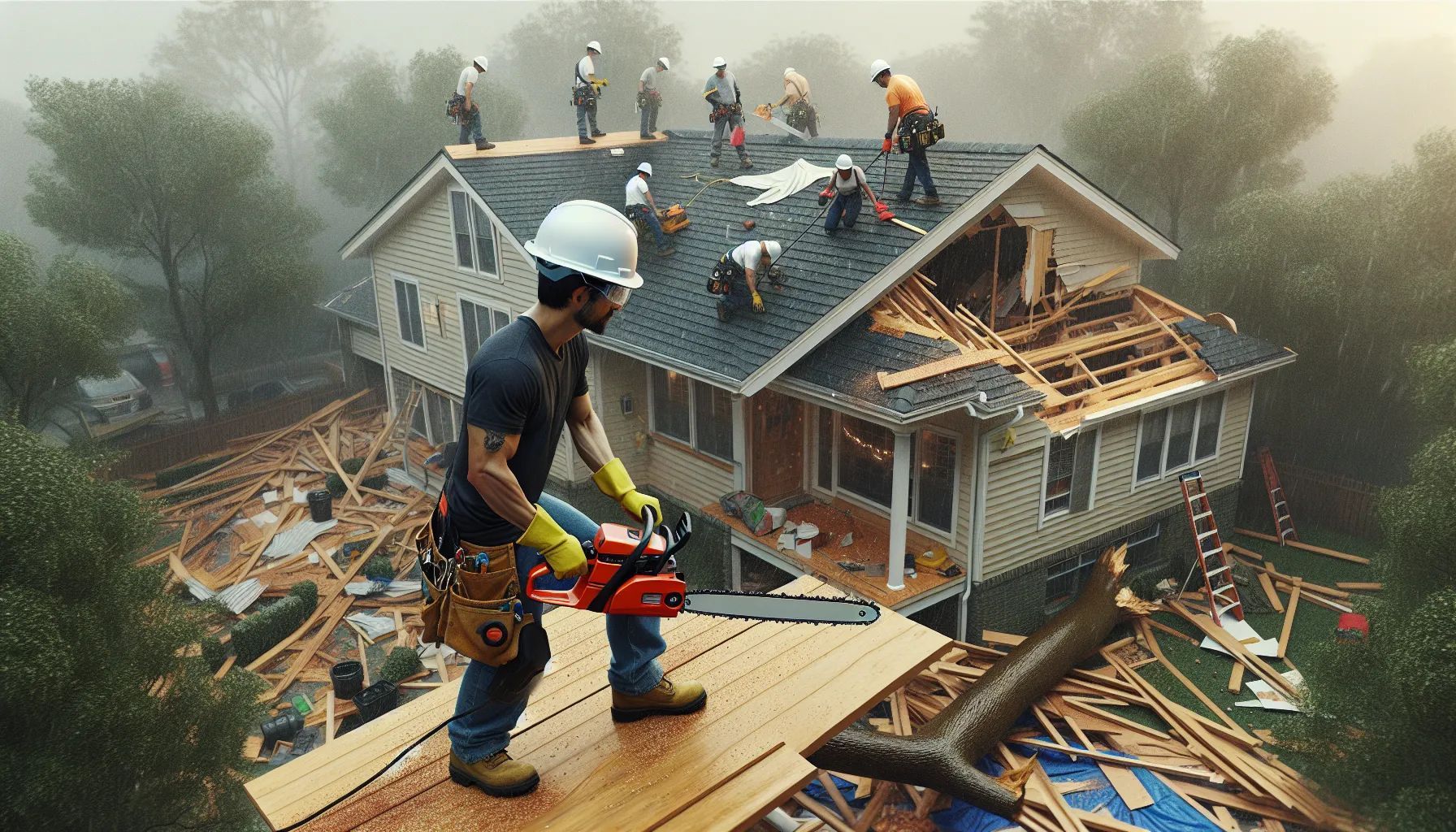
We recognize four primary roofing emergencies that demand rapid professional intervention to protect your home from extensive damage. Each emergency type presents unique challenges and requires specific repair approaches to restore roof integrity and prevent costly secondary damage.
Storm and Wind Damage
Storm damage accounts for 65% of emergency roofing calls during severe weather seasons. High winds exceeding 50 mph can lift shingles, create gaps in roofing materials, and expose underlayment to rain infiltration. Hail larger than 1 inch in diameter punctures asphalt shingles and cracks clay tiles, creating multiple entry points for water.
Emergency roofers respond to storm damage by first conducting safety assessments of the affected area. We install heavy-duty tarps secured with wooden battens to cover exposed sections temporarily. Professional crews replace missing shingles within 24-48 hours of initial contact, preventing water damage to insulation and interior structures.
Wind-driven rain often forces water under intact shingles through compromised seals. Our emergency teams apply roofing cement to reseal lifted edges and inject polyurethane sealant into visible cracks. Metal roofing systems damaged by storms receive immediate fastener replacement and panel realignment to restore weather resistance.
Tree Falls and Impact Damage
Fallen trees cause catastrophic roof damage requiring immediate structural assessment and debris removal. A mature oak tree weighing 10,000 pounds can completely collapse roof sections, while smaller branches create 2-6 inch punctures that expose attic spaces to rain and pests. Impact damage from trees affects 1 in 50 homes annually in heavily wooded areas.
Emergency response teams arrive with chainsaws, rigging equipment, and structural supports to safely remove tree sections without causing additional damage. We coordinate with certified arborists for large tree removal while our roofing specialists focus on damage assessment and temporary covering. Immediate installation of plywood patches and waterproof membranes prevents water intrusion during debris removal.
Professional crews evaluate rafter integrity and load-bearing capacity after tree removal. Damaged trusses receive temporary bracing until permanent repairs begin. We document all impact areas with detailed photographs and measurements for insurance claims, typically completing initial emergency repairs within 6-8 hours of arrival.
Major Leaks and Water Intrusion
Active roof leaks during storms create immediate threats to electrical systems, insulation, and interior finishes. Water intrusion rates of 5-10 gallons per hour through major leaks can saturate drywall within 30 minutes, leading to ceiling collapse and mold growth within 48 hours. Emergency roofers prioritize leak containment through rapid identification of entry points and temporary sealing.
We deploy moisture meters and infrared cameras to trace water paths from roof penetrations to interior damage points. Emergency repairs include applying rubberized leak barriers, installing temporary drain systems, and placing collection containers in attics. Professional teams work systematically from the highest water entry point downward, sealing each breach with appropriate materials.
Interior water damage mitigation accompanies exterior repairs during emergency responses. Our crews drill relief holes in water-logged ceilings to prevent collapse and position industrial fans for rapid drying. We apply antimicrobial treatments to wet surfaces within 24 hours to prevent mold colonization, protecting both property value and occupant health.
Fire and Structural Damage
Fire-damaged roofs require immediate stabilization to prevent collapse and protect salvageable property below. Heat exposure above 500°F weakens steel connectors and chars wooden rafters, reducing load capacity by 50% or more. Emergency roofers respond to fire damage with structural engineers to assess safety before beginning repairs.
We install temporary shoring systems using adjustable steel posts and beam assemblies to support compromised roof sections. Fire-damaged areas receive immediate weather protection through flame-retardant tarps and plywood coverings. Professional crews remove charred materials only after confirming structural stability, preventing sudden shifts that endanger workers and property.
Smoke and water damage from firefighting efforts compound structural concerns. Our emergency teams seal smoke-damaged areas with specialized primers to prevent odor penetration into living spaces. We coordinate with restoration specialists to address water damage from fire suppression while focusing on critical roof repairs that restore weather protection within 12-24 hours.
How to Choose the Right Emergency Roofer
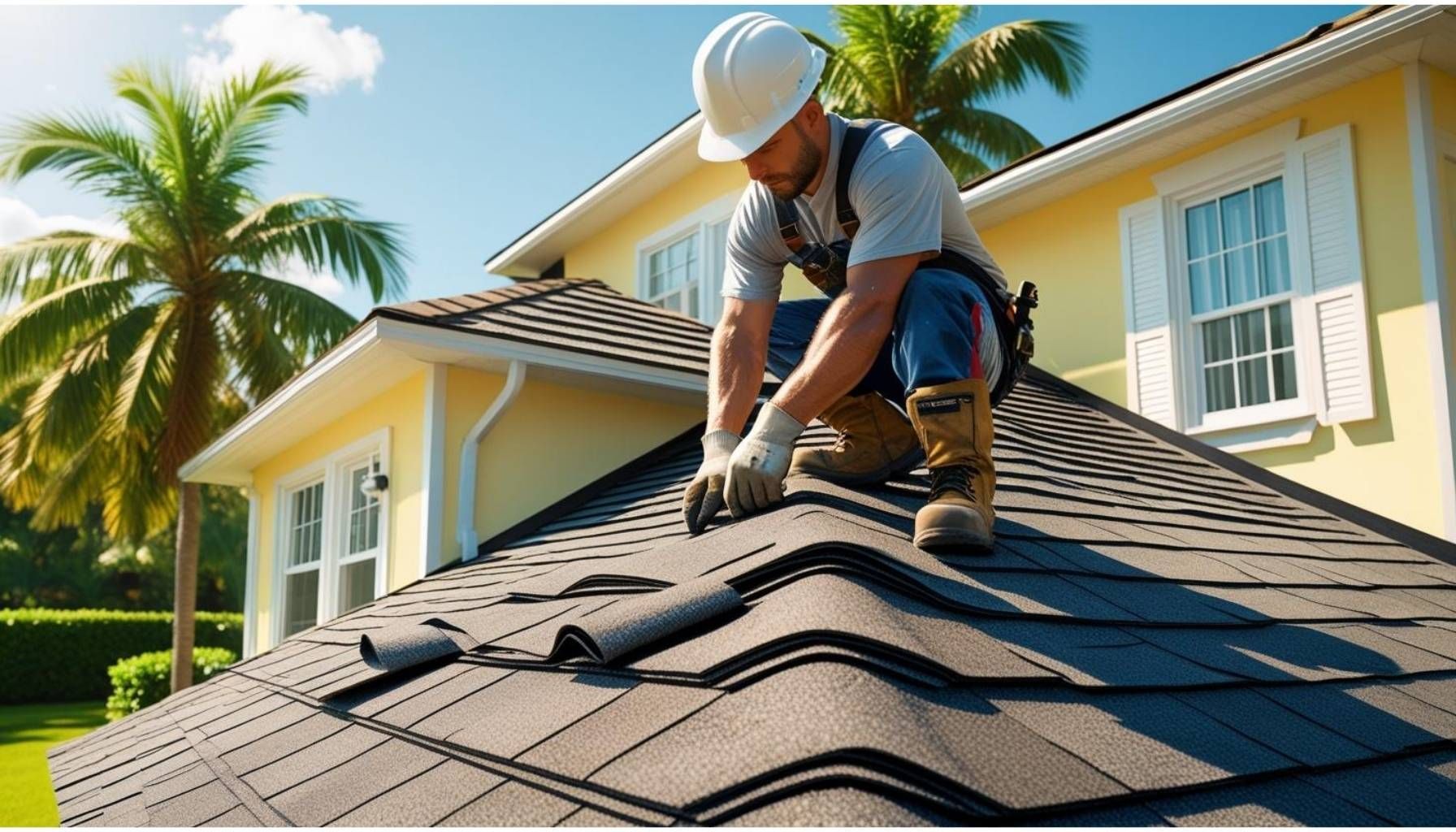
Selecting an emergency roofer requires careful evaluation of credentials, response capabilities, and pricing structures. We recommend examining these critical factors before making your decision.
Licensing and Insurance Requirements
Emergency roofers must carry valid state and local licenses. Request documentation directly from the contractor and verify authenticity through your state's Department of Professional Regulation. Licensed professionals demonstrate compliance with building codes and industry standards.
General liability insurance protects your property during repairs. Emergency roofers maintain minimum coverage of $1 million. This insurance covers accidental damage to your home, landscaping, or personal belongings during the repair process.
Workers' compensation insurance shields you from liability if crew members suffer injuries on your property. Every worker on site requires coverage under this policy. Without proper coverage, homeowners face potential lawsuits and medical expense claims.
Written proof of insurance remains essential before work begins. Request certificates showing current coverage dates and policy limits. Verify that policies stay active throughout your entire project timeline. Contact insurance providers directly to confirm coverage details.
Response Time Expectations
Emergency roofers operate 24 hours daily, 365 days annually. Professional services maintain dedicated emergency crews ready for immediate deployment. Average response times range from 2-4 hours for critical situations.
Ask contractors about their specific response timeframes during initial contact. Weather conditions and service demand affect arrival times. Companies with multiple crews handle emergencies faster than single-team operations.
Communication protocols matter during emergencies. Reliable contractors provide estimated arrival times and send updates about delays. Dispatchers stay in contact throughout the response process, coordinating crew movements and material deliveries.
Track records reveal contractor reliability. Request references from recent emergency clients. Previous customers provide insights about actual response times versus promised timeframes. Online reviews often mention response speed and communication quality.
Pricing and Payment Options
Emergency repairs fall into two categories: temporary fixes and permanent replacements. Temporary repairs cost $800-$1,600 and protect your home for several weeks or months. Full roof replacements range from $8,000-$15,000 or more, providing decades of protection.
Insurance companies prefer permanent solutions over repeated temporary patches. Multiple patch jobs often exceed the cost of complete replacement. Discuss long-term solutions with your contractor during the initial assessment.
Payment structures vary among emergency roofers. Some require deposits before starting work. Others offer milestone payments tied to project phases. Many accept direct insurance payments, reducing your out-of-pocket expenses.
Financing options help manage unexpected repair costs. Emergency roofers partner with lending companies offering same-day approvals. Interest rates and terms depend on credit scores and repair amounts. Compare multiple financing offers before committing to payment plans.
What to Expect During Emergency Roof Repairs
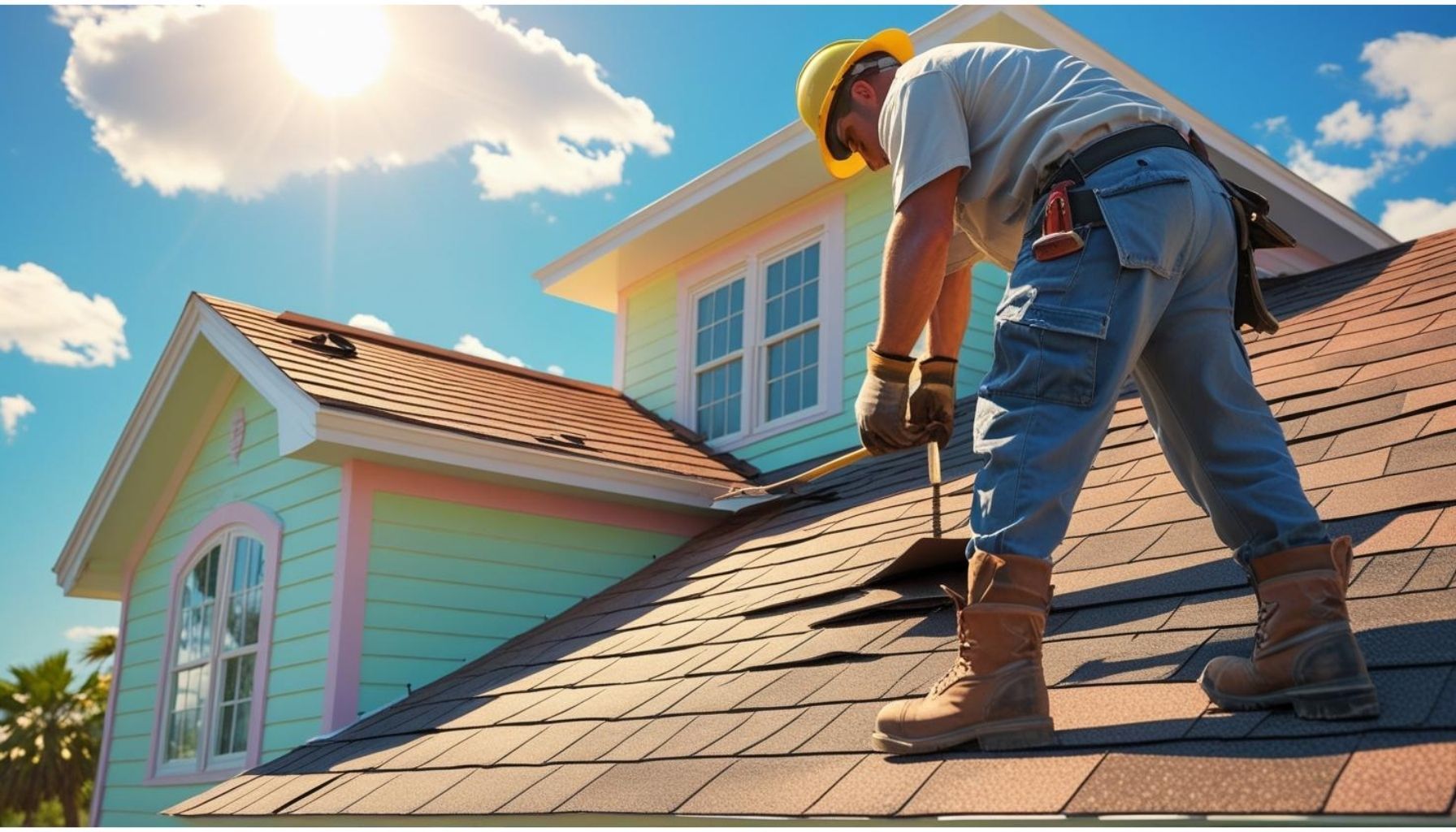
Emergency roof repairs follow a systematic process that prioritizes safety and damage prevention. We've outlined the key stages you'll encounter when professional crews arrive at your property.
Initial Assessment and Safety Measures
Emergency roofers conduct comprehensive safety evaluations within 15 minutes of arrival. Our teams check for electrical hazards, structural instability, and falling debris risks before beginning any work. We establish safety perimeters using caution tape and warning signs to protect residents and neighbors.
Professional crews inspect visible damage from ground level first. We use binoculars and drones to identify compromised areas without risking worker safety. Our assessment includes checking rafters, decking, and support structures for hidden damage that could cause collapse.
We document all findings with timestamped photos and detailed notes. Our crews measure damaged areas and calculate material requirements for both temporary and permanent repairs. We share this information with homeowners immediately to help insurance communication.
Safety equipment deployment happens simultaneously with assessment. We position ladders, install roof anchors, and set up debris containment systems. Our teams wear helmets, harnesses, and non-slip footwear throughout the entire repair process.
Temporary Solutions vs. Permanent Fixes
Temporary repairs stabilize your roof within 2-4 hours of our arrival. We install heavy-duty tarps over damaged sections, securing them with wooden battens and roofing nails. Our crews apply roofing cement to small holes and cracks, creating waterproof seals that last 30-90 days.
| Repair Type | Cost Range | Duration | Protection Level |
|---|---|---|---|
| Tarping | $200-$500 | 1-3 months | Water resistant |
| Patching | $150-$400 | 2-6 weeks | Limited protection |
| Full replacement | $15,000-$30,000 | 20-50 years | Complete protection |
Permanent repairs require scheduling after insurance approval. We replace damaged shingles, repair structural components, and install new underlayment where necessary. Our permanent solutions restore your roof's original integrity and warranty coverage.
Cost differences reflect material quality and labor intensity. Temporary fixes use basic materials and require minimal labor, keeping expenses low during emergencies. Permanent repairs involve premium materials and extensive labor, protecting your home's value through decades of weather exposure.
Documentation for Insurance Claims
We photograph every damaged area before starting repairs. Our teams capture wide-angle shots showing overall damage patterns and close-ups revealing specific material failures. We mark photos with measurement tools to demonstrate damage scale for adjusters.
Documentation packages include itemized damage reports listing affected components. We specify shingle quantities, damaged decking square footage, and compromised flashing lengths. Our reports use insurance industry terminology to expedite claim processing.
We maintain detailed repair logs throughout the emergency response. Our crews record arrival times, weather conditions, and safety measures implemented. We document all temporary repairs performed and materials used for accurate billing.
Insurance communication support extends beyond documentation. We provide direct adjuster contact when requested and clarify technical details about damage severity. Our experience with claim procedures helps homeowners receive appropriate compensation for necessary repairs.
Preparing for Roofing Emergencies
Effective preparation reduces the impact of sudden roofing failures and enables faster response when damage occurs. We recommend developing comprehensive emergency plans that address both immediate response needs and long-term prevention strategies.
Creating an Emergency Response Plan
Emergency response plans provide clear action steps during critical roofing situations. We compile contact information for three local emergency roofing services that operate 24/7, storing their numbers in multiple accessible locations. Insurance policy details belong in the same emergency folder, including coverage limits, deductibles, and claim procedures.
Documentation plays a crucial role in successful insurance claims. We photograph our roof from multiple angles every six months, creating a visual record of its pre-damage condition. Digital copies stay in cloud storage for immediate access during emergencies.
Safety protocols protect household members during roofing crises. We designate specific evacuation routes from upper floors and identify the main water shutoff valve location. Family members learn to recognize electrical hazards from water intrusion and understand when to disconnect power at the breaker box.
Communication plans coordinate household response efforts. We assign specific roles to each family member, such as calling contractors, moving valuables, or placing buckets under leaks. Neighbor contact information helps secure assistance for tarp installation or debris removal when professional help faces delays.
Regular Maintenance to Prevent Emergencies
Preventive maintenance identifies vulnerabilities before they cause failures. We schedule professional roof inspections every spring and fall, addressing minor issues like loose shingles or degraded flashing immediately. Inspectors check attic ventilation systems, as poor airflow accelerates shingle deterioration.
Gutter maintenance prevents water backup that damages roof edges. We clean gutters four times annually, removing leaves and debris that block drainage. Downspouts require flushing with water to ensure proper flow away from foundations.
Tree management reduces impact damage risks. We trim branches extending within 10 feet of roof surfaces, hiring certified arborists for large limbs. Dead trees within falling distance of structures require immediate removal, especially before storm season.
Weather monitoring helps us prepare for severe conditions. We track forecasts during hurricane season and winter months, implementing protective measures 48 hours before predicted storms. Pre-storm preparations include securing loose outdoor items and clearing gutters for maximum drainage capacity.
Cost Considerations for Emergency Roofing Services
Emergency roof repairs require immediate financial planning as costs vary based on damage severity and repair complexity. We'll examine typical rates, cost factors, and insurance considerations to help prepare for unexpected roofing emergencies.
Typical Emergency Service Rates
Emergency roof repair costs range from $300 to $20,000 depending on damage extent and affected roof sections. Minor shingle repairs cost between $600 and $1,400, while moderate repairs reach $1,500 to $2,500. Severe structural damage repairs approach $20,000.
| Roof Damage Type | Minor Repair | Moderate Repair | Severe Repair |
|---|---|---|---|
| Shingles | $300-$700 | $2,000-$3,500 | $4,000-$15,000 |
| Decking | $500-$1,000 | $2,500-$4,000 | $4,000-$8,500 |
| Framing/Structure | $1,500-$2,500 | $4,000-$6,000 | $8,000-$18,000 |
Temporary tarping services prevent additional damage and cost $200 to $1,000. Labor accounts for 40% of total costs while materials comprise 60%. Emergency crews charge premium rates for after-hours responses, adding 25% to 50% to standard labor costs.
Roofing contractors base emergency service rates on damage assessment findings. Small patch repairs for isolated shingle damage remain affordable. Extensive water damage requiring decking replacement significantly increases costs. Emergency roofers provide detailed estimates before starting repairs, ensuring transparent pricing during crisis situations.
Factors Affecting Emergency Repair Costs
Damage extent directly impacts emergency roofing costs. Superficial shingle damage requires minimal materials and labor. Structural damage involving rafters or trusses demands extensive repairs and specialized expertise.
Roofing materials influence repair expenses significantly. Asphalt shingle repairs cost less than metal, tile, or slate alternatives. Specialty materials like cedar shakes or synthetic tiles require specific repair techniques and higher material costs.
Labor complexity increases costs through several factors:
- Steep roof pitches require additional safety equipment
- Multi-story homes demand specialized access equipment
- Night-time or weekend calls trigger premium labor rates
- Hazardous weather conditions slow repair progress
Roof configuration affects repair difficulty and costs. Complex rooflines with dormers, valleys, and multiple angles take longer to repair. Flat roofs need specialized repair methods and materials, potentially increasing expenses.
Geographic location influences emergency repair pricing through local labor rates and material availability. Urban areas typically have higher labor costs but faster material access. Rural locations may face delayed material delivery and limited contractor availability.
Working with Insurance Companies
Document all damage immediately after discovering roofing emergencies. Take photographs from multiple angles showing damage extent. Record dates, times, and weather conditions during the incident.
Contact insurance providers within 24 hours of damage discovery. Most policies cover emergency repairs preventing additional damage. Coverage varies based on policy terms and damage causes.
Emergency roofers experienced with insurance claims streamline the approval process. They provide detailed estimates meeting insurer requirements. Professional documentation includes material specifications, labor breakdowns, and photographic evidence.
Save all receipts and invoices related to emergency repairs. Insurance companies require proof of expenses for reimbursement. Temporary repair costs like tarping typically qualify for coverage under damage mitigation clauses.
Work with contractors who offer direct insurance billing options. This arrangement reduces out-of-pocket expenses during emergencies. Experienced emergency roofers understand claim procedures and help expedite approvals.
Conclusion
Work with contractors who offer direct insurance billing options. This arrangement reduces out-of-pocket expenses during emergencies. Experienced emergency roofers understand claim procedures and help expedite approvals.
The key to successfully navigating a roofing crisis lies in preparation and quick action. By maintaining regular roof inspections and keeping emergency supplies ready you'll be better equipped to handle unexpected situations when they arise.
Remember that professional emergency roofers bring specialized equipment and expertise that can make the difference between minor repairs and major reconstruction. Their 24/7 availability ensures you're never left vulnerable during severe weather events or sudden structural failures.
We encourage you to save contact information for trusted local emergency roofers before you need them. Taking proactive steps today will give you peace of mind knowing you're prepared for whatever roofing challenges tomorrow might bring.
What qualifies as a roofing emergency?
A roofing emergency includes storm damage, fallen trees, major leaks threatening your home's interior, and fire damage. These situations require immediate professional intervention to prevent property damage and ensure safety. If water is actively entering your home or structural integrity is compromised, contact emergency roofers immediately.
How quickly do emergency roofers respond?
Emergency roofers typically respond within 2-4 hours for critical situations. They operate 24/7, including holidays, and usually cover a 50-mile radius from their headquarters. Response times may vary based on weather conditions and service demand, but reliable contractors maintain dedicated emergency crews for rapid deployment.
What should I look for when choosing an emergency roofer?
Verify the contractor's licensing, insurance (including general liability and workers' compensation), and emergency response capabilities. Look for established companies with positive reviews, clear pricing structures, and proper equipment for temporary repairs. Ask about their response times and whether they provide updates throughout the repair process.
Will insurance cover emergency roof repairs?
Most homeowner's insurance policies cover emergency repairs from storms, fallen trees, and sudden damage. Document all damage with photos and keep repair receipts. Contact your insurance company immediately after securing temporary repairs. Emergency roofers often help with documentation and can work directly with insurance adjusters.
What emergency supplies should I keep on hand?
Stock heavy-duty tarps, roofing cement, safety equipment (gloves, goggles, non-slip shoes), plastic sheeting for interior protection, and buckets for water collection. Keep your emergency roofer's contact information readily available along with insurance policy details. These supplies help minimize damage while waiting for professional help.
